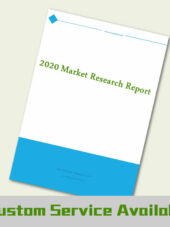Description
In the retail banking market, in FY 2021 scheduled commercial banks (SCBs) recorded INR 154.44 Trn deposits, expanding at a compound annual growth rate (CAGR) of 9.55% during the FY 2017 – FY 2021 period. Credit off-take of SCBs reached INR 107.94 Trn in FY 2021 from INR 79.13 Trn in FY 2017, expanding at a CAGR of 8.07% during the forecast period.
The COVID-19 pandemic and economic slowdown are affected the credit off-take of SCBs in FY 2021. However, consolidation of the big banks by the government and the introduction of various economic relief packages are likely to improve the business value of the major public sector banks in the country.
Various government initiatives such as increasing the number of banks’ public service units in rural areas, the Pradhan Mantri Jan Dhan Yojana program, and ree credit and debit cards with low transaction limits, drive the retail banking sector.
Major players operating in the industry include Yes Bank Limited, Axis Bank Limited, Bandhan Bank Limited, State Bank of India Limited, and HDFC Bank Limited.
Retail Banking Market segment insights
In FY 2021, in terms of deposits, public sector banks held the highest market share (~61.26%), followed by private sector banks. The contribution of public sector banks, in terms of deposits, declined by 1.12 percentage points in FY 2021, as compared to FY 2020.
Private sector banks registered a rise in the number of ATMs, both off-site and on-site, while public sector banks experienced a decline. There were 57,679 off-site public sector bank ATMs in FY 2019, whereas in FY 2020, the number fell to 56,379. Among these, most ATMs are in semi-urban areas.
Key growth drivers of the market
• To boost India’s economic growth, the Ministry of Finance and the Reserve Bank of India took measures jointly to extend the banking network, especially among the low-income population and in rural areas.
• The use of cloud-based operations has enhanced the agility of banks. The introduction of core banking solutions has led to a rise in transaction volumes since customers can operate their accounts remotely. Almost all public and private sector banks leverage data analytics and automation technology to strengthen their business operations and improve customer satisfaction.
Key deterrents to the growth of the market
With the popularity of internet-based banking, fraudulent activities have surged. Incidents of credit card scams, spamming, spoofing, e-money laundering, ATM fraud, phishing, identity theft, and transactions through unauthorized cheques increased in FY 2019, as compared to FY 2018. This has led to customers’ dissatisfaction and loss of trust in web-based banking.



